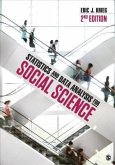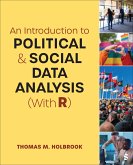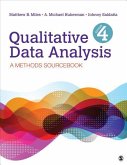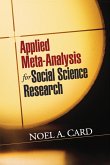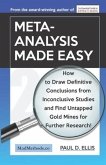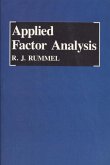The book is written for researchers in social science and marketing field, especially for those with little or no knowledge in computer programming. Data analytics has become part and parcel in the contemporary technologically fast paced world. We have amazing tools and software that allow us to analyse data available in various formats. However, most of the popular paid software and packages for data analysis is not affordable or not even accessible for the students, researchers. This is true in the case of many NGOs and agencies how are involved in community based research in developing countries. We have popular open source platforms and tools such as R and Python for data analysis. This book makes use of Python because of its simplicity, adaptability, broader scope and greater potential in advanced data mining and text mining contexts. We found it as a need to educate and train the researchers from social science and marketing research background, so that they could make use of Python, a promising tool to meet simple to extremely complex data analyses needs free of cost. The learnings from this book will not only help them in doing their conventional data analyses but also enable them to pursue advanced knowledge in machine learning algorithms, text analytics and other new generation techniques with the support of freely accessible open source platforms. Since the objective of the book is to educate the researchers with no programming background, we have made every effort to give hands-on experience in learning some basic coding in Python, which is sufficient for the readers to follow the book. The step-by-step procedure to do various data processing and analysis described in this book will make it easy for the users. Apart from that, we have tried our level best to give explanations on specific codes and how they perform to get us the desired output. We also request you to give you valuable comments and suggestions on the book, via our blog, so that we could improve the same in the upcoming volumes. We commit ourselves to providing explanations to the readers' questions related to the codes and analysis provided in this book. The book specifically deals with data sets of row and column format, as the general format commonly used in social science research, which most of the researchers are familiar with. So we do not work with arrays and dictionaries, except in one or two occasions (only to make you familiar with that) instead prefer to make use of Excel data and pandas data frame. The book consists of thirteen chapters. The first chapter gives an introduction to Python and its relevance and scope in contemporary data analysis contexts. Ch. 2 teaches the basics and Python coding, Ch. 3-7, provide a step-by-step narration of how to enter data, process it, preliminary analysis and data cleaning with the help of Python, Ch.8-9, present data visualizations and narration techniques using Python; Ch.10.demonstrate how Python can use for statistical analysis. The remaining chapters are focusing on giving more real life situations in data analysis and the practical solutions to handle them. The exercises provided in the book are similar to real analysis situations, and that will help the reader for an easy transition to the data analyst jobs. The authors have taken utmost care identifying and providing solutions to all practical difficulties the readers may face while using Python for data analysis purpose. The authors have developed a series of codes and have incorporated them to make data processing and analysis convenient and easy for the researchers. The self-learning materials given in this book will help social science and marketing researchers to deepen their understanding of various steps in data processing and analyses and to gain advanced skills in using Python for this purpose.
Hinweis: Dieser Artikel kann nur an eine deutsche Lieferadresse ausgeliefert werden.
Hinweis: Dieser Artikel kann nur an eine deutsche Lieferadresse ausgeliefert werden.


